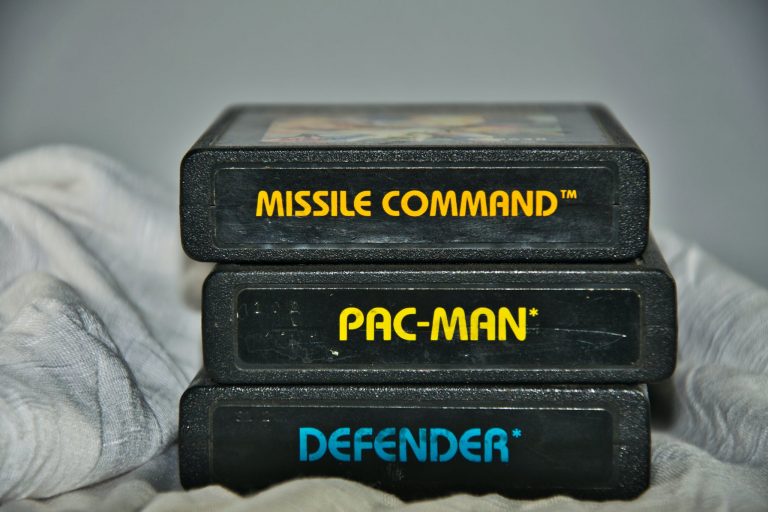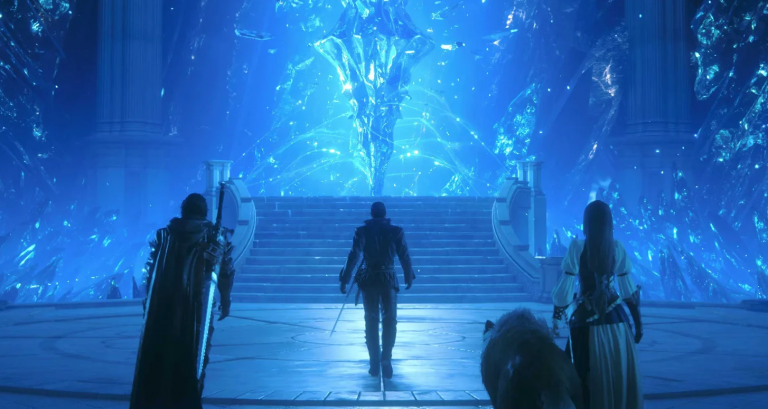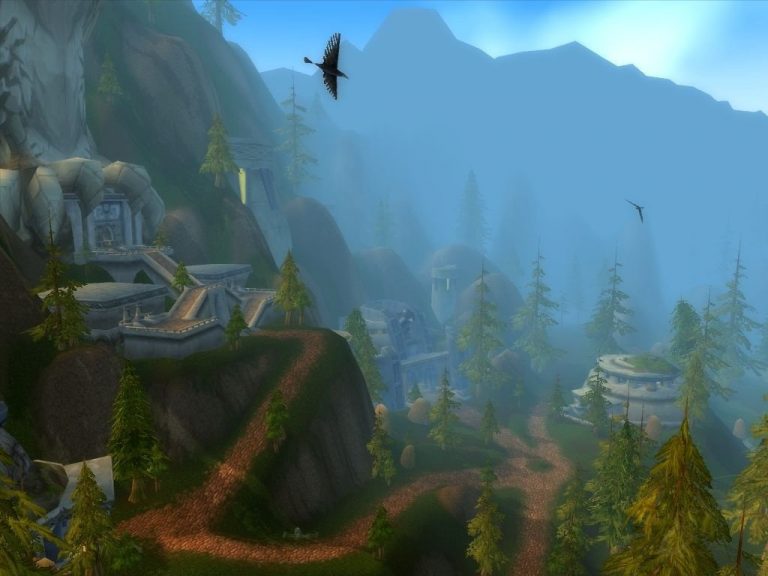Leveling Up in Pixels: The Fusion of D&D RPG Game and Video Gaming
In the ever-evolving realm of gaming, the fusion of traditional tabletop experiences and the digital landscape has given rise to a captivating synergy, captivating players across diverse platforms. One such harmonious blend takes center stage as we delve into the crossroads of Dungeons & Dragons (D&D) RPG games and the immersive world of video gaming. This article, titled “Leveling Up in Pixels: The Fusion of D&D RPG Game and Video Gaming,” embarks on a journey to explore the dynamic interplay between the rich narrative and strategic depth of D&D RPG games and the visually stunning, interactive environments of contemporary video games.
As technology propels us into new dimensions of gameplay, the integration of D&D RPG elements into video gaming has become a transformative force, reshaping the way we embark on epic quests, create memorable characters, and engage in fantastical adventures. Join us in unraveling the intricate tapestry that intertwines the classic allure of D&D RPG with the pixelated landscapes of video games, forging an experience that captivates the imagination and pushes the boundaries of gaming as we know it.
Historical Context
Exploring the intricate fusion of Dungeons & Dragons (D&D) RPG games and the immersive world of video gaming requires delving into the historical roots of these two distinct yet interconnected realms. By casting our gaze backward, we can establish a foundation for understanding the evolution of both D&D RPG games and video gaming, examining how these realms have developed, intersected, and mutually influenced one another over time.
Tracing the Roots of D&D RPG Games
Dungeons & Dragons, born in the pen-and-paper era of the 1970s, stands as a beacon of innovation that forever altered the gaming landscape. At its inception, D&D revolutionized the traditional concept of gaming by introducing a groundbreaking approach centered around storytelling, creativity, and collaborative imagination. Unlike its predecessors, which often focused on competitive play or fixed board layouts, D&D embraced the dynamic interplay between Dungeon Masters and players, fostering a unique form of interactive entertainment.
The tabletop experience of D&D is a symphony of elements that have become iconic in the realm of gaming. The ritualistic act of rolling dice, each toss representing a pivotal moment in the unfolding narrative, adds an element of chance and unpredictability. Delving into dungeons becomes more than a mere exploration of imaginary spaces; it becomes a metaphorical journey into the uncharted territories of one’s imagination. The tabletop becomes a stage where friendships are forged, alliances are tested, and epic sagas are crafted through the collective storytelling of those seated around it.
The intricate narratives woven within the framework of D&D RPG games transcend mere gameplay; they become immersive journeys into fantastical realms. The Dungeon Master’s role as a storyteller and world-builder is pivotal, guiding players through plots rich with twists, turns, and moral dilemmas. This emphasis on narrative depth not only captivates players but also empowers them to shape the direction of the story through their characters’ choices.
The enduring legacy of D&D RPG games extends far beyond the initial tabletop setting. Its influence has permeated diverse forms of media, from literature to film and, notably, into the digital realm of video gaming. The principles of storytelling, character development, and the spirit of collaborative world-building pioneered by D&D have left an indelible mark on the broader gaming landscape. The iconic fantasy races, classes, and archetypal creatures introduced in D&D have become cultural touchstones, echoing across generations of gamers and inspiring countless iterations in various entertainment mediums.
In essence, Dungeons & Dragons transcends its status as a tabletop game; it is a cultural phenomenon that continues to shape the very fabric of interactive entertainment, embodying the timeless allure of storytelling, creativity, and shared imagination.
The Evolution of Video Gaming
Simultaneously, the evolution of video gaming follows a parallel narrative, mirroring the dynamic changes witnessed in the world of Dungeons & Dragons (D&D) RPG games. Emerging from the early days of pixelated adventures, video gaming has undergone a profound transformation, evolving into a multi-billion-dollar industry that transcends its humble beginnings. The progression from blocky graphics and rudimentary gameplay to today’s visually stunning and intricately designed virtual landscapes is a testament to the relentless innovation within the gaming community.
The industry’s trajectory encompasses not only advancements in graphical fidelity but also the diversification of gaming platforms. The advent of consoles, personal computers, and, more recently, mobile platforms has democratized gaming on an unprecedented scale. Consoles like the PlayStation, Xbox, and Nintendo systems have become household names, providing immersive gaming experiences to millions. The accessibility of gaming on PCs, with their ever-improving hardware capabilities, has opened new frontiers for expansive worlds and intricate narratives. Furthermore, the rise of mobile gaming has turned smartphones and tablets into portable gaming hubs, enabling individuals worldwide to engage with diverse gaming experiences at their fingertips.
As gaming technologies continue to advance, virtual and augmented reality have emerged as transformative forces, blurring the lines between the digital and physical worlds. These immersive technologies offer players unprecedented levels of engagement, providing an experiential depth that aligns with the immersive storytelling ethos championed by D&D RPG games. The marriage of these technological innovations with the rich narrative traditions of D&D RPG creates a gaming landscape where players are not just observers but active participants in the unfolding epic. The symbiosis between the evolution of video gaming and the enduring legacy of D&D RPG games exemplifies a dynamic interplay that has propelled the gaming industry into a realm of limitless possibilities.
Key Moments of Intersection
The entwined destinies of D&D RPG games and video gaming have manifested through key moments of intersection. The transfer of narrative-driven gameplay, character development concepts, and even specific game mechanics from tabletop to digital formats has been a testament to the enduring influence of D&D RPG on the broader gaming community. Conversely, video games have provided a canvas for D&D RPG enthusiasts to experience their favorite tabletop adventures in visually dynamic and interactive ways.
As we navigate this historical terrain, we begin to see the foundations upon which the fusion of these two worlds was built. The journey ahead invites us to explore how these influences have shaped the gaming landscape and set the stage for the harmonious convergence of D&D RPG games and video gaming.
Digital Dungeons: Adapting D&D RPG to Video Games
The enthralling narrative and strategic depth inherent in Dungeons & Dragons (D&D) RPG games have found a natural home in the ever-expanding universe of video games. This section explores the seamless adaptation of classic D&D RPG elements into digital gaming, transcending traditional tabletop experiences.
Overview of Digital Adaptation
The shift from the tangible confines of physical tabletops to the expansive landscapes of virtual realms marks a transformative odyssey for Dungeons & Dragons (D&D) RPG games. In this digital transition, video games emerge as virtuoso custodians, deftly encapsulating the very essence of the tabletop experience. They translate the visceral thrill of rolling dice, the intricacies of character interactions, and the rich tapestry of unfolding narratives into a dynamic and interactive digital gameplay arena. The marriage of cutting-edge technology and masterful storytelling affords developers the unprecedented ability to not merely emulate but elevate the enchantment of D&D RPG into a captivating digital manifestation. This convergence births a visually immersive experience that serves as a testament to the indomitable spirit of the original tabletop adventure, allowing players to embark on virtual quests while retaining the nostalgic magic that first captivated them around the physical gaming table.
In traversing this transformative journey, it becomes evident that the allure of virtual realms extends beyond mere replication—it is a realm of endless possibilities. Video games have not only successfully transposed the essence of D&D RPG but have also opened new frontiers for innovation. The malleability of digital spaces enables developers to introduce features such as dynamic lighting, responsive environments, and cinematic storytelling techniques, creating a nuanced and engaging experience that surpasses the constraints of traditional tabletop setups. As players navigate through these virtual realms, the synthesis of technology and narrative fosters an immersive escapade that not only honors the legacy of D&D RPG but also pushes the boundaries of interactive entertainment in uncharted and thrilling directions.
From Dice to Virtual RNG
One cornerstone element that distinguishes Dungeons & Dragons (D&D) RPG is the infusion of chance through the ritualistic rolling of dice. In transitioning to the digital realm, this element of unpredictability seamlessly metamorphoses into the realm of Random Number Generation (RNG). Here, sophisticated algorithms meticulously replicate the capricious nature of physical dice, offering a digital equivalent that preserves the essence of chance integral to the D&D RPG experience. Video games ingeniously weave RNG into the fabric of their design, introducing it to combat scenarios, skill checks, and various in-game events with a finesse that mirrors the suspense and uncertainty inherent in traditional D&D RPG games. This digital adaptation not only maintains the spirit of chance but elevates it to new heights through the integration of dynamic animations and visually stunning effects.
Moreover, the integration of RNG into the digital adaptation of D&D RPG doesn’t merely serve as a technological translation; it becomes a dynamic enhancement of the player’s engagement. The incorporation of digital chance introduces an extra layer of immersion, as the algorithms work in tandem with the game’s visual and auditory elements. The unpredictability, whether it’s a critical hit, a spell’s success, or a pivotal narrative choice, is not only experienced through the numerical outcome but is brought to life through the synergy of dynamic animations and effects. This not only preserves the heart-pounding moments of tabletop randomness but amplifies them in a way that resonates deeply with the player, fostering a sense of both suspense and awe as they navigate the intricate digital landscapes of their adventures.
Role of Character Creation and Development
Character creation is a cornerstone of the D&D RPG experience, allowing players to shape their virtual personas with distinct classes, races, and backgrounds. Video games have embraced this aspect, offering expansive character customization options that rival the depth of tabletop counterparts. The evolution of characters within a digital space mirrors the growth and development seen in traditional campaigns, creating a sense of attachment and investment for players as they embark on their virtual adventures.
The digital adaptation of Dungeons & Dragons RPG games into the realm of video gaming showcases a harmonious marriage of traditional tabletop elements with cutting-edge technology. As we navigate these digital dungeons, we witness the synthesis of narrative richness and interactive gameplay, underscoring the dynamic possibilities that emerge when classic storytelling meets the immersive capabilities of video game design.
Immersive Environments: Bringing D&D RPG to Life in Video Games
The allure of Dungeons & Dragons (D&D) RPG lies not only in its compelling narratives but also in the immersive worlds it invites players to explore. In this section, we delve into how video games have embraced the challenge of bringing the rich tapestry of D&D RPG settings to life, creating environments that captivate the imagination and enhance the gaming experience.
Crafting Virtual Realms
Video games have seamlessly assumed the role of contemporary artisans, undertaking the meticulous task of crafting virtual realms that not only honor but elevate the depth and complexity found in Dungeons & Dragons (D&D) RPG settings. This digital metamorphosis draws inspiration from the creative prowess of Dungeon Masters, the architects of intricate dungeons and vibrant settings in the tabletop realm. In the digital landscape, developers channel this same meticulous attention to detail, utilizing advanced graphics, dynamic lighting effects, and innovative environmental design techniques. These elements synergize to birth visually stunning worlds that stand as a testament to the imaginative potency inherent in both D&D RPG and the vast realm of video games.
Moreover, the digital canvas expands beyond the limitations of physical tabletops, offering developers the opportunity to transcend traditional constraints. In these virtual landscapes, the fusion of artistic vision and technological capabilities goes beyond replication; it is a renaissance of the storytelling craft. Players find themselves immersed in intricately designed cities, mystical forests, and foreboding dungeons that not only capture the essence of D&D RPG but amplify it through the immersive potential of video games. The virtual realms cease to be static backdrops; they become dynamic, evolving landscapes that respond to the choices and actions of the player, fostering a sense of agency and exploration reminiscent of the most memorable tabletop adventures.
Dynamic Environments and Exploration
The digital adaptation of D&D RPG has ushered in an era where environments are not static backdrops but dynamic spaces that react to the player’s actions. Just as adventurers in traditional tabletop settings can alter the course of their journeys, video game environments respond to the choices and movements of players. This dynamic interactivity adds a layer of realism and unpredictability, fostering a sense of exploration that mirrors the essence of D&D RPG. Players can uncover hidden secrets, trigger events, and shape their own narratives within these dynamic digital landscapes.
Cinematic Storytelling Techniques
In the dynamic realm of video games, storytelling transcends the traditional confines of static narratives. Developers employ cinematic storytelling techniques not only to enhance immersion but to craft narratives that resonate on a visceral level. The integration of meticulously orchestrated cutscenes, strategic camera angles, and scripted events seamlessly harmonizes with the player’s actions, creating a narrative flow that mirrors the dynamic storytelling embraced in Dungeons & Dragons (D&D) RPG. This fusion of cinematic elements with interactive gameplay doesn’t just blur the lines between passive observation and active participation; it transforms the gaming experience into a truly cinematic journey where players are not only emotionally invested in the unfolding narrative but also instrumental in steering its course.
As we traverse these immersive environments, the symbiosis of Dungeons & Dragons and video games emerges as a harmonious dance between tradition and innovation. It is not merely a replication of the intricate settings of D&D RPG but a profound enhancement facilitated by the technological canvas. The marriage of storytelling prowess and cutting-edge technology ensures that players aren’t confined to the role of mere spectators; instead, they emerge as active participants, influencing and shaping the unfolding sagas within virtual worlds inspired by the timeless charm of Dungeons & Dragons. The resonance of D&D’s narrative magic is not only preserved but elevated, as players find themselves deeply engaged in the interactive tapestry of adventures that seamlessly marries the past and future of gaming.
Conclusion
In the dynamic realm of video games, storytelling transcends the traditional confines of static narratives. Developers employ cinematic storytelling techniques not only to enhance immersion but to craft narratives that resonate on a visceral level. The integration of meticulously orchestrated cutscenes, strategic camera angles, and scripted events seamlessly harmonizes with the player’s actions, creating a narrative flow that mirrors the dynamic storytelling embraced in Dungeons & Dragons (D&D) RPG. This fusion of cinematic elements with interactive gameplay doesn’t just blur the lines between passive observation and active participation; it transforms the gaming experience into a truly cinematic journey where players are not only emotionally invested in the unfolding narrative but also instrumental in steering its course.
As we traverse these immersive environments, the symbiosis of Dungeons & Dragons and video games emerges as a harmonious dance between tradition and innovation. It is not merely a replication of the intricate settings of D&D RPG but a profound enhancement facilitated by the technological canvas. The marriage of storytelling prowess and cutting-edge technology ensures that players aren’t confined to the role of mere spectators; instead, they emerge as active participants, influencing and shaping the unfolding sagas within virtual worlds inspired by the timeless charm of Dungeons & Dragons. The resonance of D&D’s narrative magic is not only preserved but elevated, as players find themselves deeply engaged in the interactive tapestry of adventures that seamlessly marries the past and future of gaming.






